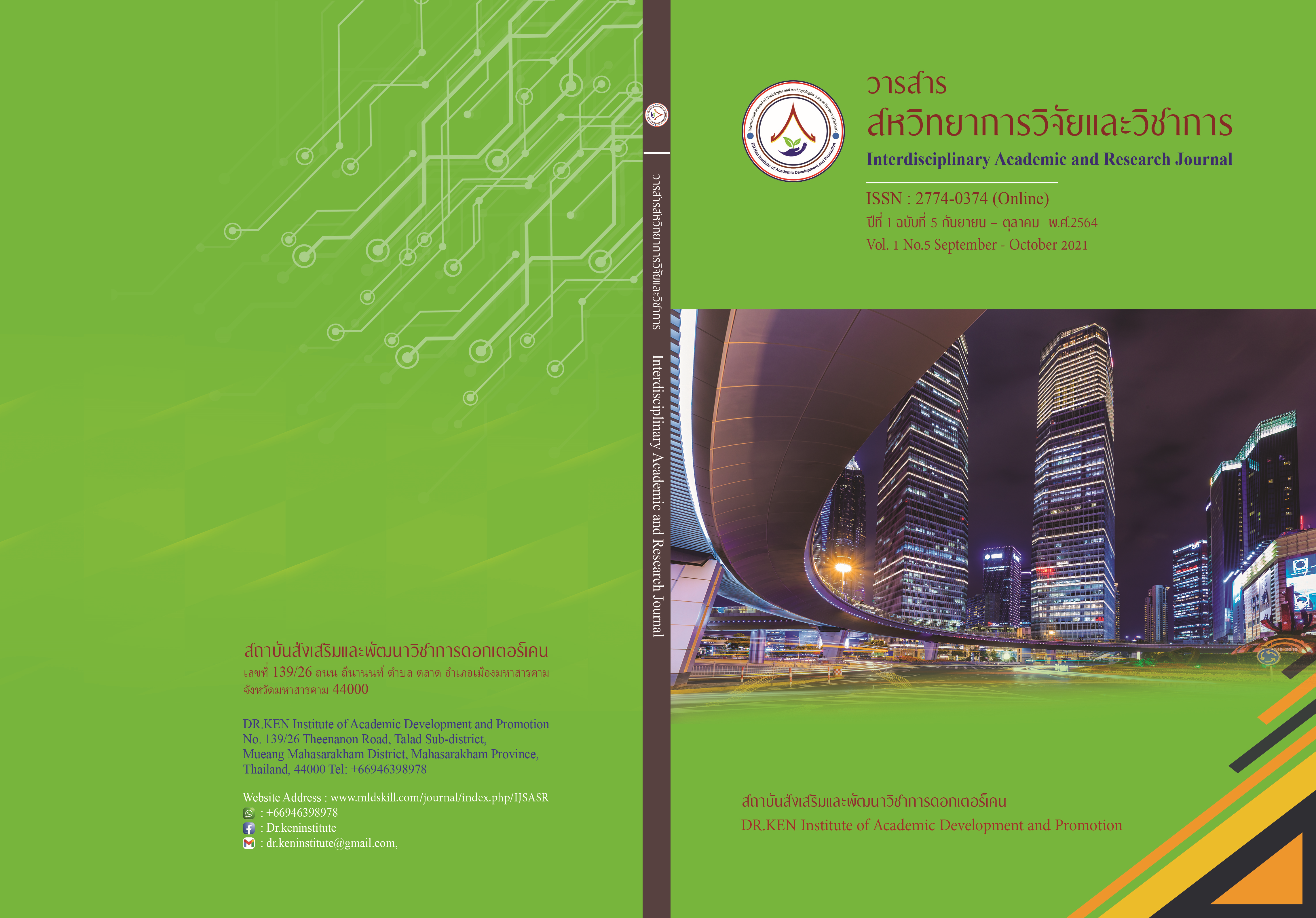The Learning Process of Chemical Reduction and Use of Chemicals in Safety Radius of Ban Non Sawang Community, Sao Lao Sub-district, Nong Kung Si District, Kalasin Province
DOI:
https://doi.org/10.14456/iarj.2021.22Keywords:
Learning Process, Chemical Reduction, SafetyAbstract
The purpose of this research was to study the learning process of chemical reduction and use of chemicals in a safe radius of Ban Non Sawang Community, Sao Lao Sub-district, Nong Kung Si District, Kalasin Province. The target group was a specific target group selected from the willingness to join the constitution on the use of chemicals according to community rights for health of 20 people, from 5 families. The tools to collect the data are in-depth interviews, group discussions on issues that explore social phenomena, respect for community rights and nature.
Driven through a variety of activities and using qualitative analysis methods, the results showed that: From the study of the chemical-free community process suitable for community-driven, it was found that; (1) After creating awareness to the aunt group, it means the base of thought and the four characteristics of a chemical-free community. (2) The target group has a response to show ownership of the chemical-free community, so the chemical-free community has been established. After the group's establishment, the group designed, formulated activities to drive awareness, awareness of being a chemical-free community. (3) Building the power of a chemical-free community for the empowerment group to be stronger by creating a Community Health Constitution. Bringing appropriate chemical-free community processes to learn together with other communities.
From the analysis, it was found that bringing the chemical-free community to learn together with the communities in other areas is a link in learning through empirical learning in behavior through two main learning activities. It is (1) bringing the chemical-free community to learn together with the community in other areas, and (2) the community in other areas to learn together with the chemical-free community.
References
จันทนา อินทฉิม (2563). การจัดการชุมชนเข้มแข็ง ตามแนวคิดปรัชญาของเศรษฐกิจพอเพียง : กรณีศึกษา ศูนย์การเรียนรู้ปรัชญาของเศรษฐกิจพอเพียง ตำบลบางปลา อำเภอบางพลี จังหวัดสมุทรปราการ. Journal of Administrative and Management Innovation, 8 (3), 116-127.
ไชยรัตน์ เจริญสินโอฬาร. (2544). รัฐศาสตร์แนว วิพากษ์. พิมพ์ครั้งที่ 2. กรุงเทพฯ : สำนัก พิมพ์มหาวิทยาลัยธรรมศาสตร์
ประทีป วีระพัฒนนิรันดร์. (2542). การจัดกระบวนการเรียนรู้ในชุมชน. กรุงเทพฯ: มูลนิธิพลังนิเวศและชุมชน.
เพ็ญจันทร์ สิทธิปรีชาชาญ และ ปนัดดา ปริยฑฤฆ (2557). กระบวนการพัฒนาระบบการดูแลสุขภาพชุมชน: 14 กรณีศึกษาในชุมชนพื้นที่ภาคกลาง. Journal of Public Health Nursing, 28(1),1-15.
เพ็ญจันทร์ สิทธิปรีชาญ, ปนัดดา ปริยฑฤฆ และ ญาณิศา โชติกะคาม (2555). กระบวนการดูแลสุขภาพผู้สูงอายุอย่างมีส่วนร่วมของชุมชนตำบลมาบแค. วารสารพยาบาลทหารบก, 13 (2), 8-17.
ยนตรการ จินะคำปา และ ศิวรักษ์ ศิวารมย์. (2560).กระบวนการพัฒนาต้นแบบชุมชนบริหารจัดการตนเอง : กรณีของตำบลชมภู อำเภอสารภี จังหวัดเชียงใหม่. วารสารบัณฑิตวิจัย, 8 (1), 183-197
วาริธ ราศรี. (2557). รูปแบบการพัฒนาชุมชนอยู่ดีมีสุข : กรณีศึกษาบ้านกุดซุย อำเภอเมือง จังหวัด มหาสารคาม. วารสารช่อพะยอม, 25 (1), 119-127.
Downloads
Published
How to Cite
Issue
Section
License
Copyright (c) 2021 Interdisciplinary Academic and Research Journal ISSN 2774-0373 (Online)

This work is licensed under a Creative Commons Attribution-NonCommercial-NoDerivatives 4.0 International License.
Copyright on any article in the Interdisciplinary Academic and Research Journal is retained by the author(s) under the under the Creative Commons Attribution-NonCommercial-NoDerivatives 4.0 International License. Permission to use text, content, images, etc. of publication. Any user to read, download, copy, distribute, print, search, or link to the full texts of articles, crawl them for indexing, pass them as data to software, or use them for any other lawful purpose. But do not use it for commercial use or with the intent to benefit any business.
















.png)


